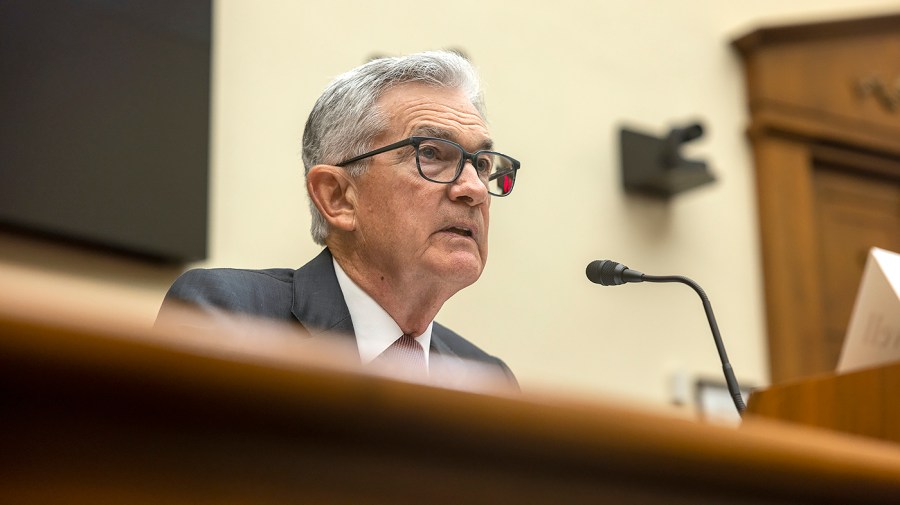Federal Reserve Chair Jerome Powell said Wednesday that while the central bank staff is no longer forecasting a recession, there’s still a “long way to go” to get inflation back to its 2 percent target. The Fed pushed its baseline interest rate range to the highest level in 22 years Wednesday as officials were wary of letting inflation creep higher. Despite months of fading price growth, Federal Reserve Chair Jerome Powell said the bank was not quite done fighting inflation.
Here are five takeaways from Powell’s remarks to reporters. Inflation is “well above” the Fed’s two percent goal, Powell told reporters, and he does not expect to get back to the target rate until 2025. While he quipped that the June consumer price index “came in better than expected for a change,” Powell said one month of surprisingly good data wasn’t enough to change course.
He demurred on future rate hikes, saying it was “certainly possible” the Fed will vote to raise rates again at its September meeting. “I would also say it’s possible that we would choose to hold steady at that meeting,” Powell added. What Powell did make clear: high interest rates aren’t going away any time soon.
After months of nailbiting worry that a recession was coming, Powell announced that Fed staffers were no longer projecting a recession to hit the U. S. economy.
“The staff now has a noticeable slowdown in growth starting later this year in the forecast, but given the resilience of the economy recently, they are no longer forecasting for recession,” Powell said. Wall Street has also become increasingly confident that the U. S.
can avoid a recession, a 180-degree turn from predictions earlier this year that a recession was inevitable and right around the corner. Goldman Sachs economists cut their probability of a recession this year from 25 to 20 percent in a published last week. Despite rising confidence in the economy’s outlook, Powell said inflation was unlikely to fall back to the Fed’s 2 percent annual target without the labor market weakening.
Until wage growth slows further, Powell argued, consumers will have enough power to push through inflation and prompt businesses to raise prices. Powell declined to say how many Americans would need to lose their jobs before inflation was back on track, but acknowledged that unemployment would likely rise even if the Fed averts a recession. “We have to be honest about the historical record, which does suggest that when central banks go in and slow the economy to bring down inflation, the result tends to be some softening in labor market conditions,” Powell said.
“That is still the likely outcome here. ” While Powell has accepted job losses as the cost of fighting inflation, Democratic lawmakers and progressive activists are likely to be alarmed about the Fed’s insistence on raising rates. Liberals opposed to further Fed hikes insist the central bank has already done enough to bring inflation down and risks driving the U.
S. into a needless recession. “The Fed’s extreme rate hikes risk throwing millions of Americans out of work.
Unemployment for Black workers is already rising at an alarming pace,” said Sen. Elizabeth Warren (D-Mass. ) online before the Fed’s announcement.
Powell countered that quashing inflation now at the expense of some jobs avoids deeper pain in the future, citing the hyperinflation and subsequent recessions of the 1970s and 80s. “We think the single most important thing we can do to benefit those very families, especially families at the lower end of the income spectrum, is to get inflation sustainably under control and restore price stability,” Powell said. Powell insisted Wednesday that the Fed had not yet decided whether it will raise rates or pause at its next policy meeting scheduled for September.
A raft of new economic data could shift the Fed’s plans, Powell said, including new data on GDP growth and employment costs, two jobs reports and several new inflation readings. “Inflation has proved repeatedly has proved stronger than we and other forecasters have expected and at some point that may change. We have to be ready to follow the data,” he said.
“Given how far we’ve come,” he continued, “we can afford to be a little patient as well as resolute as we let this unfold. ”.
From: thehill
URL: https://thehill.com/business/4121447-5-takeaways-as-the-fed-reignites-its-inflation-fight/
